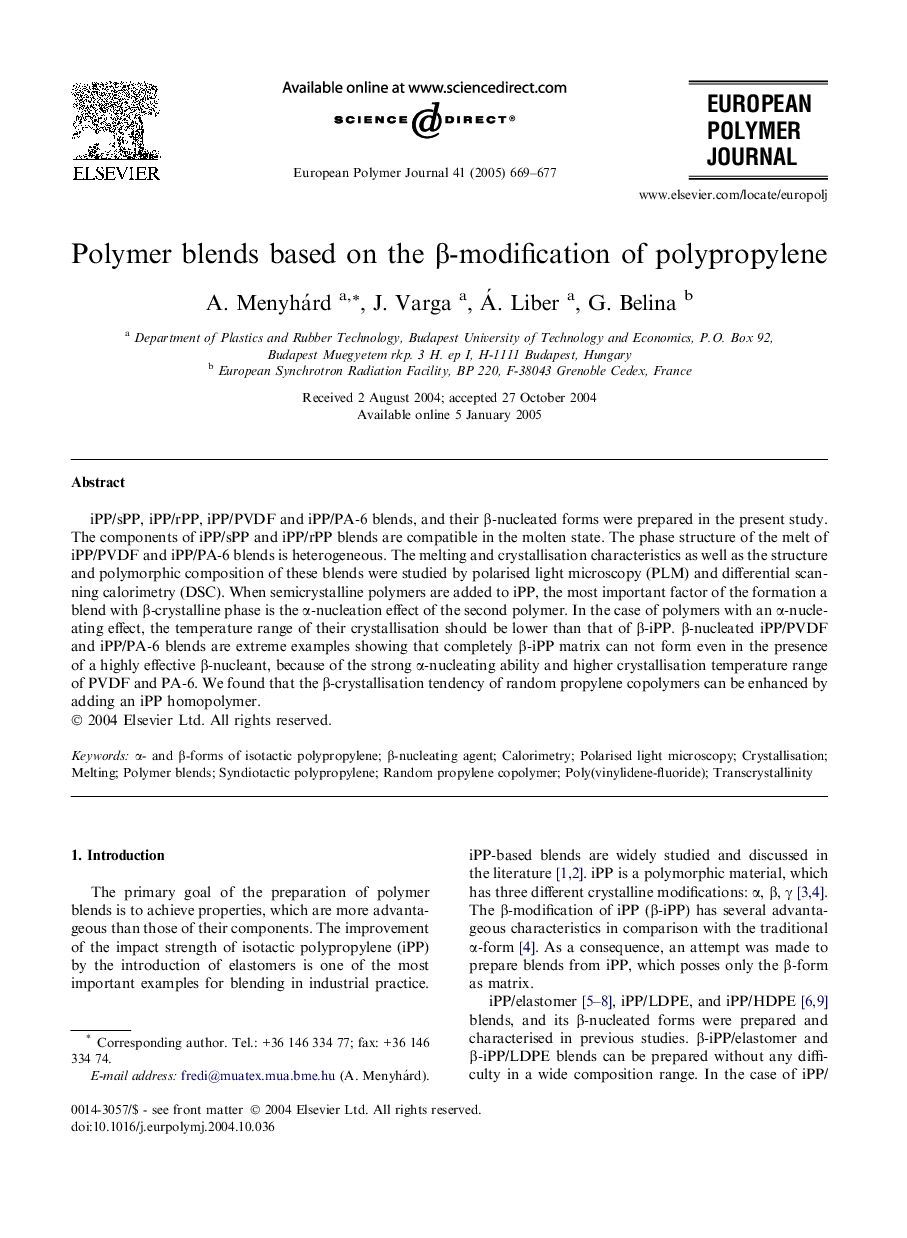| Article ID | Journal | Published Year | Pages | File Type |
|---|---|---|---|---|
| 10608852 | European Polymer Journal | 2005 | 9 Pages |
Abstract
iPP/sPP, iPP/rPP, iPP/PVDF and iPP/PA-6 blends, and their β-nucleated forms were prepared in the present study. The components of iPP/sPP and iPP/rPP blends are compatible in the molten state. The phase structure of the melt of iPP/PVDF and iPP/PA-6 blends is heterogeneous. The melting and crystallisation characteristics as well as the structure and polymorphic composition of these blends were studied by polarised light microscopy (PLM) and differential scanning calorimetry (DSC). When semicrystalline polymers are added to iPP, the most important factor of the formation a blend with β-crystalline phase is the α-nucleation effect of the second polymer. In the case of polymers with an α-nucleating effect, the temperature range of their crystallisation should be lower than that of β-iPP. β-nucleated iPP/PVDF and iPP/PA-6 blends are extreme examples showing that completely β-iPP matrix can not form even in the presence of a highly effective β-nucleant, because of the strong α-nucleating ability and higher crystallisation temperature range of PVDF and PA-6. We found that the β-crystallisation tendency of random propylene copolymers can be enhanced by adding an iPP homopolymer.
Keywords
Related Topics
Physical Sciences and Engineering
Chemistry
Organic Chemistry
Authors
A. Menyhárd, J. Varga, Á. Liber, G. Belina,
